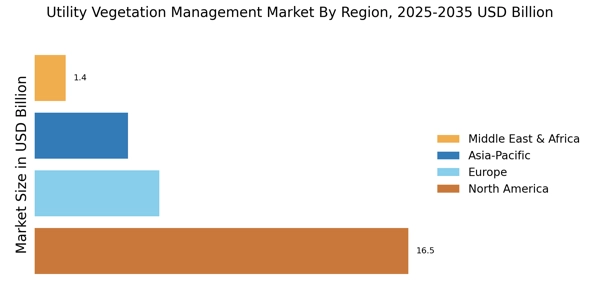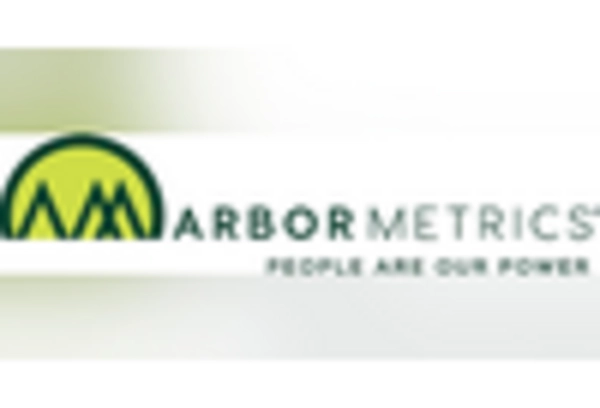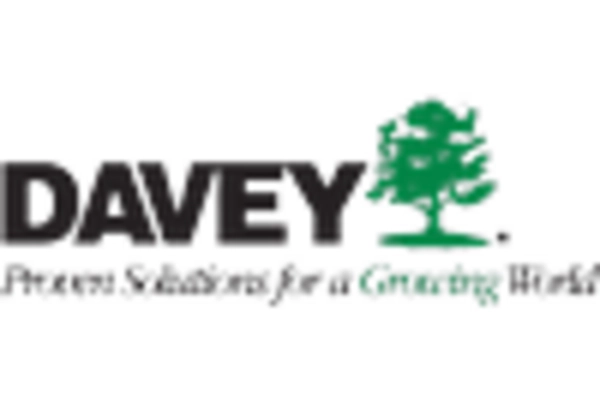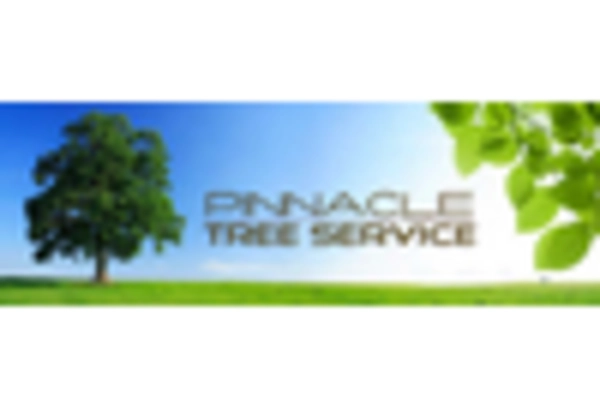Environmental Regulations and Compliance
The Utility Vegetation Management Market is increasingly shaped by stringent environmental regulations aimed at preserving ecosystems. Regulatory bodies are enforcing guidelines that require utilities to manage vegetation responsibly, particularly in sensitive areas. Compliance with these regulations is essential for avoiding penalties and maintaining operational licenses. The market is anticipated to expand as utilities invest in sustainable vegetation management practices, with an estimated growth rate of 6% over the next few years. This includes the adoption of environmentally friendly herbicides and the implementation of integrated pest management strategies. By aligning with regulatory requirements, utilities not only enhance their operational efficiency but also contribute to environmental conservation efforts, thereby fostering a positive public image.
Increased Focus on Safety and Reliability
Safety and reliability are paramount in the Utility Vegetation Management Market, particularly as utilities face heightened scrutiny from regulatory bodies. The need to prevent power outages and wildfires caused by vegetation encroachment has led to stricter compliance requirements. As a result, utility companies are investing more in vegetation management programs to mitigate risks associated with vegetation interference. The market is projected to grow as utilities allocate approximately 10% of their operational budgets to vegetation management initiatives. This focus on safety not only protects infrastructure but also enhances public trust in utility services. Moreover, the implementation of comprehensive vegetation management strategies is likely to reduce liability risks, further driving market growth.
Growing Demand for Renewable Energy Sources
The Utility Vegetation Management Market is significantly influenced by the rising demand for renewable energy sources. As countries strive to meet sustainability goals, the expansion of renewable energy infrastructure, such as wind and solar farms, necessitates effective vegetation management. This is essential to prevent overgrowth that could obstruct energy generation and transmission. The market is expected to witness a surge in demand, with estimates suggesting an increase in vegetation management services by 7% annually over the next five years. Utility companies are increasingly recognizing the importance of maintaining clear zones around renewable energy installations to ensure optimal performance. Consequently, this trend is likely to drive investments in vegetation management solutions, thereby enhancing the overall market landscape.
Rising Urbanization and Infrastructure Development
Urbanization and infrastructure development are key drivers in the Utility Vegetation Management Market. As urban areas expand, the demand for reliable utility services increases, necessitating effective vegetation management to ensure uninterrupted power supply. The market is projected to grow by approximately 8% annually, driven by the need to manage vegetation in densely populated regions. Utility companies are focusing on maintaining clearances in urban settings to prevent outages caused by falling branches or overgrown vegetation. Additionally, infrastructure projects, such as road expansions and new housing developments, require proactive vegetation management to mitigate risks. This trend underscores the importance of strategic planning in vegetation management, ultimately enhancing service reliability and customer satisfaction.
Technological Integration in Utility Vegetation Management
The Utility Vegetation Management Market is experiencing a notable shift due to the integration of advanced technologies. Innovations such as Geographic Information Systems (GIS) and drones are enhancing the efficiency of vegetation management practices. These technologies allow for precise mapping and monitoring of vegetation, which is crucial for maintaining clearances around power lines. The market is projected to grow at a compound annual growth rate (CAGR) of approximately 5.2% from 2023 to 2028, driven by the increasing adoption of these technologies. Furthermore, the use of predictive analytics is enabling utility companies to anticipate vegetation growth patterns, thereby optimizing maintenance schedules and reducing operational costs. This technological evolution not only improves service reliability but also contributes to the overall safety of electrical infrastructure.


















Leave a Comment